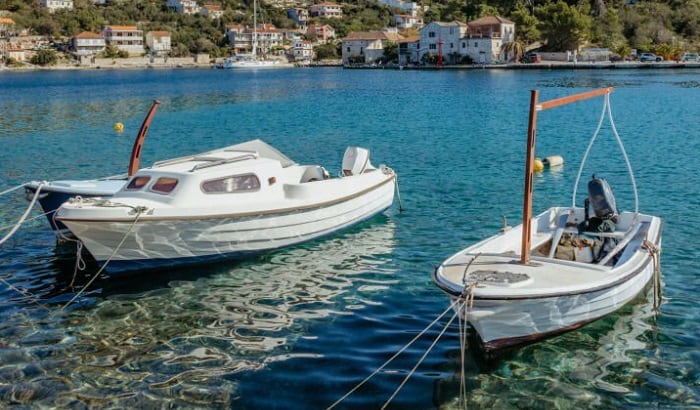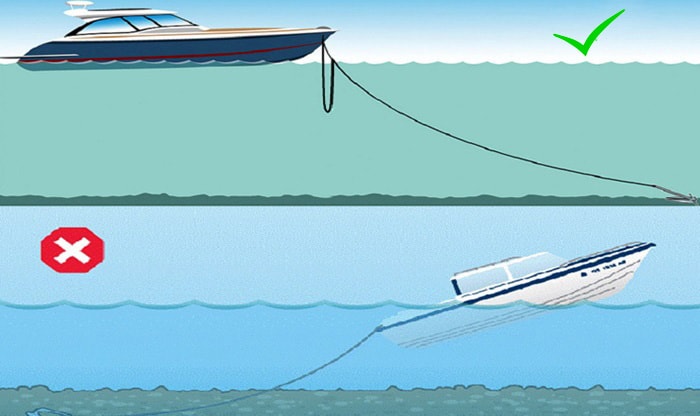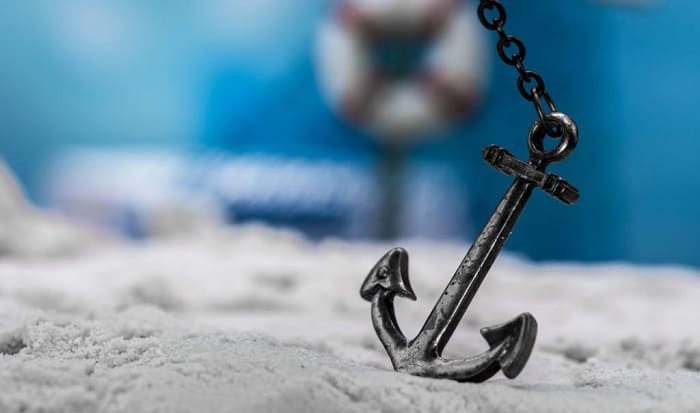nFor any greenhorn sailor who’s literally still testing the waters, anchoring can be quite the challenge. “A boat should always be anchored from which section?” is but one of the first few questions that pop into one’s mind.
To keep the anchor secure and the boat safe, always tie the anchor to a bow cleat once it’s properly set. Don’t tie it directly to the stern unless it’s a stern anchor or set it from that section.
Table of Contents
Why the Bow Is the Best Section to Anchor From
The main reason why it’s recommended to set the anchor from the bow of a vessel instead of the stern is due to a boat or ship’s design.
The bow or front of the ship is designed to be pointy or V-shaped to anticipate waves that the vessel will face when anchored. If you tie the anchor there, it can “ride” the waves with ease and settle with the bow in the direction of the current.
Tying on the flat stern where vulnerable, important parts such as the prop and rudder are found is futile and nothing short of dangerous. The opposite of what anchoring from the bow will happen as the stern’s construction tends to not be enough to handle a hefty anchor’s added weight.
There’s a good reason why almost all anchoring equipment and cleats are installed on the bow section, and that’s one of the main ones. Swamping or the boat taking on water is another equally life-threatening situation.
Frequently Asked Questions
Which Part of the Boat Should You Lower the Anchor Line?
In the same manner that you would tie the anchor on a bow cleat, always lower it from that section. You only risk your vessel getting capsized, otherwise.
Boaters rarely anchor from the stern unless they’re highly experienced and have second, backup anchors. If that’s the case, it can be a pain since two anchors are hard to manage solo, which is why sailors don’t anchor a boat front and back, too. Most of the time, you end up sacrificing one, so it’s not really practical.
A stern anchor is the only exception to the rule. Usually, smaller vessels are the only ones that use these specialized stern or stream anchors, especially if they need to anchor in a narrow channel. These anchors simply keep the boat in current from the stern, hence their name.
What Are Some Vital Precautions When Anchoring?
- Beware of rocks, bad weather, big waves, and other vessels should be avoided when anchoring. Any combination of these factors makes anchoring trickier.
- Keep a safe distance from the anchor chain.
- Never anchor on a steep slope, wreck areas, and marine parks.
Always Take Time to Brush Up on Proper Anchoring Techniques
Chances are, you’re still also a newbie on most boat anchoring rules.
- Mastering the proper technique for anchoring and choosing an area to anchor your vessel always involves factoring in wind and current. Look out for the ideal bottoms you have for the type of anchor you have with you (i.e. whether it’s for sandy or rocky bottoms).
- Be sure to do it slowly. Throwing or “casting” the anchor, as the saying goes, is not really optimal since it may cause the line to tangle and the anchor to lay on the bottom wrong.
- The rule of thumb for anchor line scope is 5 feet for every foot of water depth. Always consider when figuring out how much length of line you should be letting down when setting your anchor.
If you have time, I highly recommend watching this detailed anchoring video. It dives into the details of anchor positioning and communication, which every serious sailor should know:
Conclusion
The most important answer to the question, “A boat should always be anchored from which section?” is the bow, as long as the boat and all its passengers are kept in place and safe. Only anchor from the stern if you’re using an anchor specifically designed for it or you know that you will not compromise your vessel. Lastly, always keep learning more about anchoring techniques.

“My intention from the first day establishing Boating Basics Online is to provide as much help as possible for boaters who want to experience a first safe and convenient trip. So feel free to join us and share your beautiful journeys to the sea!”



